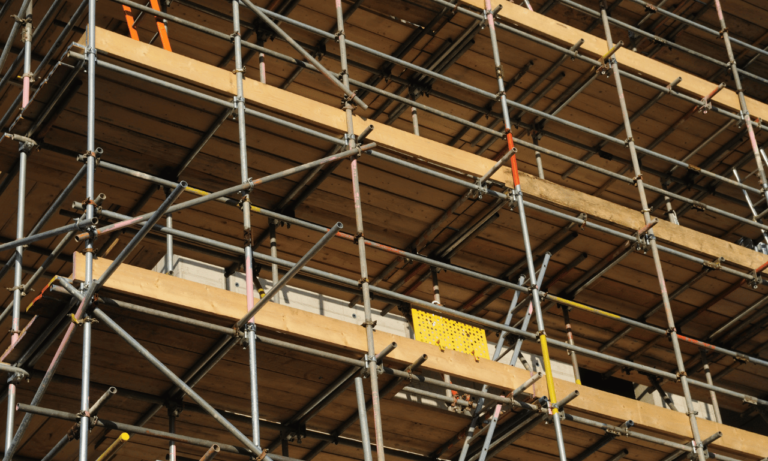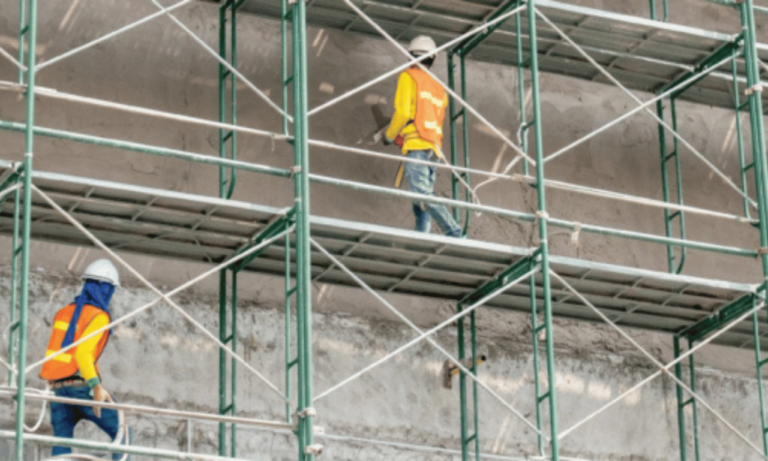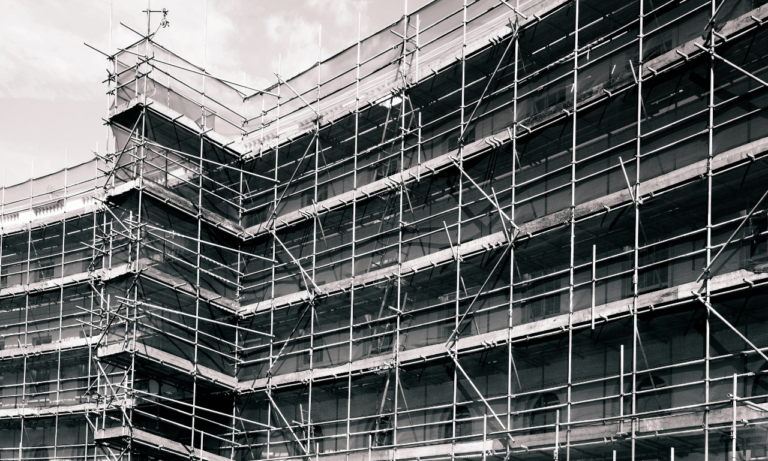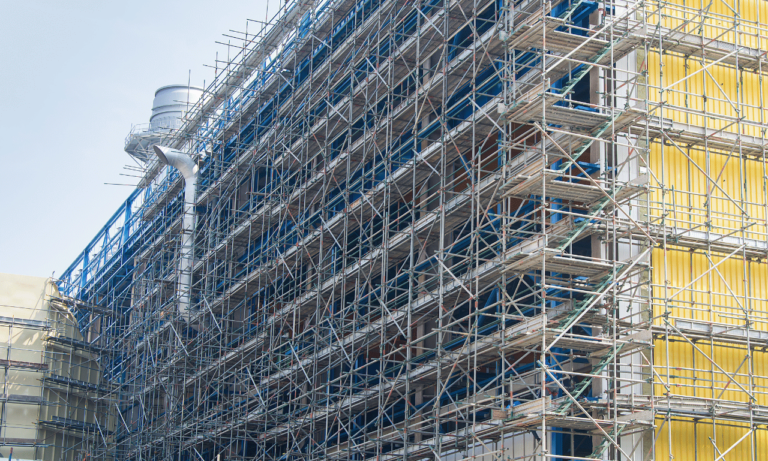Phone:
(+65)8319-0742
Renowned in the realm of construction equipment, Cantilever Scaffolding stands as a transformative safety platform for workers engaging in tasks on the exterior surfaces of buildings and other structures. Its distinct design, featuring needles or struts extending outward, renders it a pivotal industrial support structure. Notably, this suspended scaffold extends its utility across numerous domainsâfrom façade refurbishment to complex bridge construction, and into the meticulous realm of window installations.
The innovative Proscaf system enhances the structural stability of cantilevered scaffolds, utilizing load-bearing cross-braces crafted from premier-grade steel. This integration facilitates safe, efficient construction while bearing significant loads over extended spans. The hallmark of cantilever scaffolds is their elimination of non-system support components, making installation a more streamlined process. However, impeccable engineering and design are crucial in ensuring the accommodation of loads, environmental stresses, and adherence to rigorous safety standards.
Key Takeaways
- Crucial for providing a safe and secure work area on the sides of structures.
- Proscaf system’s high-grade steel enhances load capacity and simplifies installation.
- Integral to a wide array of applications including maintenance, construction, and installation projects.
- Engineering must consider environmental factors to maintain safety and structural integrity.
- Safety features like guardrails and toeboards are essential for worker protection.
- Compliance with safety regulations is a non-negotiable aspect of cantilever scaffold installations.
Exploring the Unique Advantages of Cantilever Scaffolding
Disruptive scaffold design techniques have evolved to introduce Cantilever Scaffolding, a structure that extends the capabilities of traditional systems. Renowned for pushing the boundaries, cantilever scaffolds facilitate construction and maintenance tasks by reaching new heightsâboth literally and figuratively. Professionals within the industry appreciate the manifold Cantilever Scaffolding benefits, particularly in scenarios where conventional scaffolding falls short.
Adaptability to Challenging Environments
The intrinsic adaptability of Cantilever Scaffolding systems allows them to stand out amidst a variety of construction environments. This scaffold design thrives in areas with dense urban architecture or natural obstacles that would normally impede construction activities. By eliminating the reliance on ground-based poles and frames, these structures easily navigate tight spaces, offering unprecedented flexibility and enhancing safety. As such, the suspended scaffold becomes not merely an option but a necessity in certain challenging terrains.
Enhanced Access for Maintenance and Construction Work
Cantilever Scaffolding’s design has the commendable advantage of providing vital access points to workers tackling maintenance or construction projects. Their extended reach is particularly influential when work must be performed on the external façades of buildings, often inaccessible with conventional scaffolding. The suspended scaffold seamlessly accommodates for these hard-to-reach areas, making it an invaluable asset in the architect’s and construction manager’s toolkit.
Ease of Assembly and Disassembly
Given the complexity of erecting traditional scaffolds, the Cantilever Scaffolding system offers a refreshing ease of assembly and disassembly. This efficiency becomes a critical factor in keeping project schedules on track and reducing overall costs. Combining intuitive scaffold design with time-saving qualities, cantilever structures can often be pre-assembled at ground level and then hoisted into position, minimizing risk and manual labor at elevated heights. Such operational benefits extend to a variety of users, adding practical value to both commercial and residential settings alike.
Cantilever Scaffolding in Commercial and Industrial Projects

The scope of Cantilever Scaffolding extends beyond minor repairs and residential buildings; it is a crucial component in large-scale commercial and industrial constructions. Its advanced engineering is tailored to address sophisticated requirements, offering a safety solution where conventional construction equipment might falter. In the competitive market, the demand for versatile and efficient scaffolding systems is met by the distinctive capabilities of cantilever scaffolding.
Commercial skyscrapers often wrestle with the challenge of exterior maintenance and renovation. Here, cantilever scaffolding stands out, as it snugly fits into urban landscapes filled with tight spaces and complex architectural elements, offering unmatched access and support. Furthermore, industrial projects such as heavy-duty manufacturing plants or power stations also rely on the flexibility and strength of cantilever scaffolding systems. These construction equipment solutions allow for sustained, high-level work with minimal interference to ground-level operationsâessential in areas where any downtime translates to significant financial impacts.
The practicality of cantilever scaffolding in these sectors is also mirrored in its economic advantages. Erecting and dismantling this type of scaffold is considerably more cost-effective than other forms. This is especially evident in situations with limited access, where the inherent design of cantilever scaffolding significantly reduces labor requirements and potential productivity losses.
- Ensures safe and secure access to difficult-to-reach areas in both commercial and industrial environments.
- Minimizes project downtime by allowing simultaneous ground-level operations.
- Cost-effectiveness through rapid erection and dismantling processes.
- Provides robust stability and support, augmenting worker safety and confidence.
In conclusion, Cantilever Scaffolding embodies an innovative approach to overcoming traditional barriers in construction and maintenance. By integrating this construction equipment into their project planning, businesses not only safeguard their workforce but also achieve greater efficiency and cost savings.
Design and Engineering: Creating Safe Cantilever Scaffolding Systems

The essence of industrial support structure robustness begins with its design and engineering. The complexity of scaffold design is particularly pronounced when it comes to cantilever scaffolding systems. These structures require precision engineering to ensure they not only meet but exceed safety standards. At the core of these efforts is an unyielding commitment to upholding the highest levels of safety for each safety platform.
Adhering to Load Capacity Standards
To ensure the structural integrity of a cantilever scaffold, strict adherence to load capacity standards is non-negotiable. This involves careful analysis and consideration of both static and dynamic weights that the system will support during use. Engineers must account for the weight of materials, equipment, and personnel for any given project. An effective scaffold design balances the necessity of carrying heavy loads with the critical requirement of maintaining uncompromised stability.
Incorporating Robust Anchoring Techniques
The reliability of a cantilever scaffolding is highly dependent on its anchoring system. Robust anchoring techniques are not just a suggestion; they are a mandate for the safe operation of any suspended scaffold. SafeSmart NZ and other industry specialists prioritize the development of anchoring methods that resist the unpredictable forces of nature while providing a steadfast support to the cantilevered structure.
Safety Features and Compliance
In designing an effective industrial support structure, architects integrate a variety of safety features. Guardrails, toeboards, and dedicated harness attachment points form the primary line of defense against falls and injury. Ensuring compliance with these safety features extends beyond the initial design phase; it requires ongoing training, inspection, and adaptation to meet the evolving standards of the construction industry’s regulatory bodies.
| Feature | Function | Compliance Standard |
|---|---|---|
| Guardrails | Prevention of falls | OSHA 1910.29(b)(1) |
| Toeboards | Protection from falling objects | OSHA 1910.28(b)(8) |
| Rated Harness Points | Secure anchoring for fall arrest systems | ANSI Z359.1 |
By following these rigorous standards, the industry ensures that each cantilever scaffolding system not only stands up to technical scrutiny but also provides a reliable safety platform for the myriad of workers who entrust their lives to its efficacy every day.
Implementing Effective Safety Measures for Cantilever Scaffolding

In the realm of construction equipment, particularly scaffold design, the emphasis on Cantilever Scaffolding safety is a critical component designed to protect workers and enhance the functionality of the safety platform. Catering to the intricate nature of the Cantilever Scaffolding system demands not only a comprehensive strategy for safety but also warrants strict adherence to methodical training and maintenance programs.
Proper Scaffold Installation Training
For those engaging with construction equipment and scaffold systems, precise training tailored to Cantilever Scaffolding ensures that technicians are fully equipped with knowledge on its design and assembly. It’s crucial that each step, from careful review of scaffold design blueprints to the actual on-site implementation, is performed under the guidance of seasoned professionals. Adequate training entails a thorough understanding of the individual components, load-carrying capacities, and safety mechanisms inherent to the safety platform.
Consistent Inspection and Maintenance Protocols
Maintenance and inspection are the underpinning elements that sustain the longevity and safety of Cantilever Scaffolding. Regular checks detect potential hazards or degradation in the structure, be it from environmental exposure or consistent usage. Formalized schedules for inspection ensure that each component of the construction equipment, from the base to the highest platform, complies with safety standards and is fit for use. Maintenance not only refers to the physical condition of the scaffold but also covers the need to update or improve the safety features in line with evolving safety guidelines and innovations in scaffold design.
Adoption of the 3 in 1 Rule for Scaffold Stability
In the quest for optimal Cantilever Scaffolding safety, the ‘3 in 1 Rule’ emerges as a cornerstone for stability assurance. This rule, defining that the height of the scaffold must be three times less than the base width, directly impacts the stability of the erected structure. Failing to satisfy this standard necessitates additional measures like employing guide wires to counter poise the scaffold, thus mitigating potential tipping risks. Such steadfast rules are seminal in establishing a safety platform that is not only robust but also infallibly secure.
Ultimately, the overarching objective is to enshrine a culture of safety that suffuses every aspect of Cantilever Scaffolding operation, thereby inoculating the work environment against preventable mishaps and ensuring the well-being of all involved personnel.
| Condition | Requirement | Action if Unmet |
|---|---|---|
| Base to Height Ratio | 1:3 (Base Width : Scaffold Height) | Install Guide Wires |
| Inspection Frequency | Before Each Work Shift | Conduct Repairs or Enhancements |
| Maintenance Checkpoints | Structural Integrity, Load Capacity, Wear & Tear | Replace Defective Components |
Conclusion
As we have seen throughout this discussion, Cantilever Scaffolding is more than just another item in the construction equipment category. It’s a revolutionary system that ingeniously adapts to the often difficult and varied terrains of construction sites. Its ability to act as a suspended scaffold offers a myriad of solutions for workers to safely access challenging locationsâbe it the daunting heights of skyscrapers or the underside of a bridge.
The safety platform provided by cantilever scaffolding is the culmination of precise engineering and careful consideration of industry standards, ensuring a secure foundation for the many men and women who ply their trades at heights. The system’s ease of assembly and disassembly not only saves time but also minimizes risk; it is this blend of efficiency and security that positions cantilever scaffolding as an indispensable supporter of modern industry.
In essence, cantilever scaffolding is more than just beams and platforms; it is the backbone of any construction project that demands safety, reliability, and flexibility. When designed and implemented correctly, it enhances the workflow structure, unequivocally solidifying its stature as an essential and irreplaceable industrial support structure. As the landscape of construction continues to evolve, so too will the capabilities and applications of cantilever scaffolding, ensuring workers are equipped with the very best to tackle the challenges of tomorrow.
FAQ
What are the primary benefits of cantilever scaffolding?
Cantilever scaffolding offers several key advantages including adaptability to challenging environments, enhanced access for maintenance and construction work, and ease of assembly and disassembly. It provides a safe platform for workers when traditional scaffold setups are not feasible, and it allows work to be carried out over obstacles or in areas with restricted space.
How does cantilever scaffolding adapt to challenging environments?
The design of cantilever scaffolding enables it to extend a safety platform without the need for poles and frames in front of the work area. This makes it highly adaptable for working over obstructions, along narrow pathways, and in places that are otherwise hard to reach with standard scaffold structures.
Can cantilever scaffolding be used for both commercial and industrial projects?
Yes, cantilever scaffolding systems are employed in a wide range of settings from small-scale commercial to extensive industrial projects. They are particularly valuable in situations where access is constrained and provide safe and sturdy platforms for workers in a variety of construction and maintenance tasks.
What are the key design considerations for safe cantilever scaffolding?
Safe cantilever scaffolding requires meticulous engineering, adherence to load capacity, robust anchoring techniques, and incorporating safety features as per compliance standards. The design must take into account the environmental pressures and ensure the structural integrity of anchoring points and the scaffold as a whole.
How important are safety features and compliance in the construction of cantilever scaffolding?
Safety features such as guardrails, toeboards, and harness attachment points are critical for cantilever scaffolding. Compliance with industry safety standards ensures the well-being of the workers and is vital for the legal and ethical operation of construction equipment. A scaffold must be properly engineered, regularly inspected, and well-maintained to prevent accidents.
What safety measures should be implemented for cantilever scaffolding?
Effective safety measures for cantilever scaffolding include proper training for installation and dismantling, consistent inspection and maintenance checks, and adherence to the ‘3 in 1 Rule’ for scaffold stability. These precautions help to maintain a secure working environment and reduce the risk of workplace accidents.
What is the ‘3 in 1 Rule’ for scaffold stability, and why is it important?
The ‘3 in 1 Rule’ for scaffold stability stipulates that the height of the working scaffold should be no more than three times the minimum base width unless the scaffold is secured against tipping with ties or guys. This rule is important because it’s a basic guideline for ensuring the structural stability and safety of the scaffold, preventing potential accidents caused by tipping.
Are cantilever scaffolding systems cost-effective?
Cantilever scaffolding systems can be cost-effective, especially in situations where erection and dismantling traditional scaffolding is complex or not possible. The initial investment may be higher due to the engineering and safety features required, but they can save money in the long run by reducing labor costs and increasing efficiency due to their ease of assembly and dismantling.

















